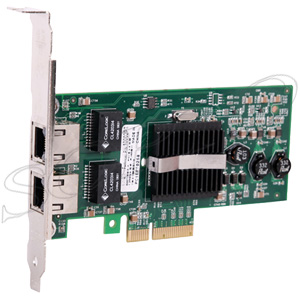-

- Sopto Home
-

- Special Topic
-

- PCI-E Card Knowledge
-

- Types of Interface Cards
PCI-E Card Knowledge
- Info about Network Interface Card Teaming
- How to Setup a Server with Multiple Network Interface Adapters?
- How to Reconnect an Internet Network Adapter for an Acer Aspire?
- 9 Things to Do When Your Internal Network Card Stops Working
- Ethernet Standards NIC for Home Networking
- What Is a Network Interface Adapter?
- How to Configure a Network Interface Card in Linux?
- How should Configure Your NIC for ISA and TMG?
- Recommended Network Card Configuration for Forefront UAG Servers
SOPTO Special Topic
Certificate



Guarantee
Except products belongs to Bargain Shop section, all products are warranted by SOPTO only to purchasers for resale or for use in business or original equipment manufacturer, against defects in workmanship or materials under normal use (consumables, normal tear and wear excluded) for one year after date of purchase from SOPTO, unless otherwise stated...
Return Policies
Defective products will be accepted for exchange, at our discretion, within 14 days from receipt. Buyer might be requested to return the defective products to SOPTO for verification or authorized service location, as SOPTO designated, shipping costs prepaid. .....
Applications

PCI-E NIC Cards provide redundant connectivity to ensure an uninterrupted network connection.
PCI-E NIC Cards are ideal for VM environments with multiple operating systems, requiring shared or dedicated NICs.
They are specially designed for desktop PC clients, servers, and workstations with few PCI Express slots available.
SOPTO Products
- Fiber Optic Transceiver Module
- High Speed Cable
- Fiber Optical Cable
- Fiber Optical Patch Cords
- Splitter CWDM DWDM
- PON Solution
- FTTH Box ODF Closure
- PCI-E Network Card
- Network Cables
- Fiber Optical Adapter
- Fiber Optical Attenuator
- Fiber Media Converter
- PDH Multiplexers
- Protocol Converter
- Digital Video Multiplexer
- Fiber Optical Tools
- Compatible
Related Products
Performance Feature
PCI-E Card Knowledge
Recommended


Types of Interface Cards
The network interface card is a type of expansion card, which means that it plugs into an expansion slot on the computer's motherboard. This card allows the computer to connect to a LAN (local area network) connection. The main difference between network cards is how fast they access and with what medium they connect to networks.
10/100 Ethernet
This is the most common type of network interface card, and it is most often seen in homes and small businesses. These cards are generally compatible with category 5 or 6 network cables. These cards plug into one of the following expansion slots: PCI (Peripheral Component Interconnect), PCIe (PCI Express) or ISA (Industry Standard Architecture). 10/100 Ethernet cards can transmit information either at 10 MB (megabytes) or 100 MB per second. This type of network card is compatible with standard desktop computers and regular servers.
Gigabit Dual Copper Port PCI-E Server Adapter
Wireless
A wireless network interface controller network card allows you to connect to a computer network via radio signals. Unlike traditional interface cards, it is not wired to the computer. Wireless network interface controller network cards are essential for wireless connectivity, and they are generally found in laptops. These cards can transfer information at generally 54 MB per second, but you can boost their speeds if you use it with another type of network interface card. These types of network cards provide you with more freedom because you do not need to plug into an Ethernet cable port to access a network source. Instead, you can search for wireless networks in your area.
Gigabit Ethernet
These types of network interface cards are very similar to standard 10/100 Ethernet cards, except that they can transfer information at up to 1 GB per second. These generally use the PCIe slot over the other types of expansion slots, and these cards usually use one of the following categories of network cables: 5, 5e, 6 or 7. In some instances, they may even use fiber optic cables, especially if being used by a client server.
Fiber Optic
Fiber optic network interface cards can transfer information between 10 and 100 GB per second, and they are often used in network infrastructures. They require fiber optic cables to run correctly, and usually these are not hard-wired to the system. Instead, they are external devices that plug into servers or desktop workstations. Fiber optic network interface cards are for large or IT (information technology) business and they tend to be more expensive than standard network interface cards.
For more info, please browse our website.




